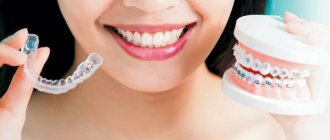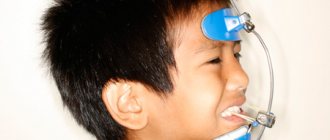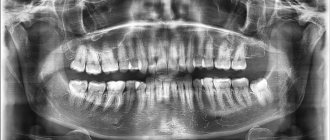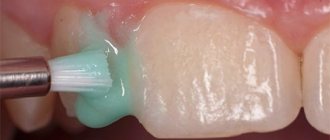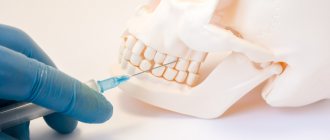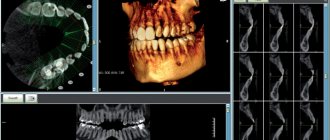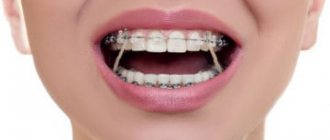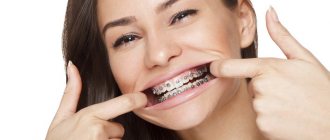3135
The capabilities of modern dentistry make it possible to correct any complex defect in the dental system.
Most anomalies are corrected by braces. Orthodontic structures can be prescribed at any age, even after 30 years. But let’s find out together which systems are the most effective.
Is it worth getting braces after 30 years?
Many are sure that after 30 years it is no longer useful to get braces, as well as to arrange your personal life. These are outdated stereotypes that are no longer relevant today for the following reasons.
- Dentistry has made great strides forward and has high-tech and more effective orthodontic treatment methods.
- The age of marriage is increasing, many people start families at 30–35 years old and later, when they have already made a career. Naturally, a young woman getting married will want to get her teeth in order, something she never had the opportunity to do before. After all, a smile is an important attribute of attractiveness that men pay attention to.
- After 30 years, physiological displacement of the lower row of teeth begins, crunching, clicking may appear, and facial aesthetics may deteriorate.
- A previously uncorrected bite is one of the main reasons for the development of cervical osteochondrosis and headaches in young people.
On a note!
According to doctors who are specialists in the field of orthodontics, the effectiveness of treatment with braces after 30 years is quite high if it is carried out in a qualified manner.
Which braces are better to choose?
In adulthood, you have more chances to choose braces; you can also afford those made from expensive materials - ceramic, sapphire, gold plated, it is a matter of taste and possibilities. But regarding the type of fixation of the system, the final word remains with the specialist.
Correction of teeth and bite after 30 years is more problematic, so preference is given to external or vestibular braces, they can be:
- metal;
- plastic;
- ceramic;
- transparent sapphire.
Internal or lingual systems are placed only in cases of minor tooth deformation.
Price issue
The total cost of correction with braces depends on the following factors:
- the complexity of the anomaly;
- type of device (lingual, vestibular);
- material used in manufacturing;
- manufacturer's fame;
- prestige of the clinic.
Let's look at the average pricing policy in clinics in the Russian Federation using the table as an example.
| System material | The cost of the entire structure in rubles | Total price for correction in rubles |
| Vestibular device made of metal | From 15 000 | 45 000 – 85 000 |
| Ceramic vestibular device | From 38,000 | 100 000 – 170 000 |
| Sapphire vestibular device | From 38,000 | 80 000 – 165 000 |
| Vestibular device made of plastic | From 18 000 | 45 000 – 65 000 |
| Metal lingual appliance | From 65,000 | 100 000 – 125 000 |
| Aligners | From 130,000 (set of 10 pieces) | 150 000 |
How long should you wear braces?
The period of wearing braces is individual for each patient, determined by the nature and severity of the deformation. But it will be longer on average by 6 to 12 months than with correction in adolescence, when bone tissue is more pliable.
Important!
In total, treatment may take 1–3 years; in the future, you will still have to wear retainers or mouth guards to consolidate the result.
Photos before and after treatment are presented below.
Contraindications
With age, the list of contraindications for wearing braces increases . The adaptation mechanisms of the body as a whole decrease, the mobility of the maxillofacial system decreases, and there may be serious dental problems (for example, the absence of a significant number of teeth).
In addition, there is a list of diseases for which correction with braces is prohibited:
- malignant tumors;
- mental disorders;
- diseases of the blood and immune system;
- HIV infections;
- diabetes;
- periodontitis or periodontal disease;
- osteoporosis or osteomalacia;
- complex heart pathologies;
- tuberculosis.
If any of these diseases are detected after the installation of braces, the system is immediately removed and remission is expected.
Some patient conditions allow the installation of braces, but require additional and more careful monitoring by a doctor. These include:
- bronchial asthma;
- hormonal disorders;
- rheumatoid atritis affecting the mandibular temporal joint;
- endocarditis;
- poor oral hygiene;
- the presence of implants or prostheses.
Important ! Installation of a brace system is carried out only after a comprehensive examination of each patient for the presence of contraindications.
Advantages and disadvantages of installing the system on teeth after 30
The decision to get a beautiful smile for those over 30 has a strong motivation. Straightening teeth and bite using a braces system expands a person’s capabilities and provides a number of advantages:
- eliminates complexes, improves social adaptation in the team and society;
- expands opportunities for professional growth and career;
- helps improve personal life, especially for women;
- eliminates crunching and pain in the mandibular joint;
- reduces the likelihood of developing osteochondrosis, reduces headaches.
Most mature people have dental problems.
Basically, this is caries, and you will first have to undergo a course of treatment from a dental therapist. Next, you need to be prepared to wear braces for a long time - at least 2 years. Then a retention period of several years is necessary to consolidate the result with the help of special fixatives - retainers, aligners. Only under such conditions can the desired result be obtained.
Therefore, it is necessary to weigh the pros and cons in advance, taking into account your capabilities.
Devices for adults
A huge variety of fixed orthodontic devices allows you to choose effectively working designs for a person of any age. Including for patients who are very demanding about facial aesthetics and do not want to put up with even a temporary deterioration.
There are simple, reliable and inexpensive metal systems, the only drawback of which is their visibility.
You can install ceramic and sapphire structures that are unnoticeable and look very elegant. True, you will have to pay a higher price for this.
Reference. An essential component of any braces system is a metal arch that passes through the grooves of the braces. Thanks to its elasticity and “shape memory”, it “puts in order” those teeth that have deviated to the side from the correct position.
Since the wires are made of metal, they stand out against the background of the teeth even if the braces themselves are invisible. To make the friend invisible, a light coating identical to the color of the teeth, for example, Teflon, is applied to it.
For those who do not agree to put up with even minor unaesthetics, lingual constructions . They are installed on the inside of the teeth and are completely invisible.
Patients who are knowledgeable about the functionality of different types of braces will likely prefer self-ligating (ligature-free) instructions . They have a number of functional advantages compared to classic models.
Pragmatists who pay attention only to the financial side of the issue can opt for plastic models . Despite all the shortcomings of these systems, they are quite capable of saving the patient from simple dental anomalies.
Relatively recently (at the very end of the last century), fundamentally new orthodontic devices were developed, which were called aligners.
Despite the short history of their existence, these devices are already serious competitors to classic braces. Their invisibility and low maintenance requirements make them increasingly popular.
However, due to limited functionality, aligners cannot completely replace classic braces. They will be discussed in more detail below.
Unligated
An important design feature is the method of attaching the arch to the braces. Based on this feature, a distinction is made between ligature and non-ligature (self-ligating) systems .
In the first, the arch is attached to the bracket with ligatures (wire or elastic rings).
In the second option, the arch is connected to the braces, passing through a groove closed at the top, relative to which it can move in the horizontal direction.
Non-ligature braces are made from the same material as ligature braces - metal, ceramic, sapphire or plastic, and can be either lingual or vestibular.
Ligature-free systems have a number of advantages:
- Aesthetics , due to the absence of ligatures.
- Efficiency due to the ability to self-adjust, thanks to sliding in the bracket groove.
- Ease of installation . Faster and easier to install and remove (no need to attach each bracket to an archwire).
- Comfort for the patient (due to the absence of the same ligatures).
- It is easy to maintain oral hygiene (food debris does not accumulate around braces as much as in ligature devices).
- Reduced number of visits to the dentist.
With so many advantages, ligature-free braces have only one drawback - increased cost due to the presence of a mechanism for closing the groove.
Lingual
Based on their location, the structures are divided into vestibular and lingual. The first are installed on the buccal side of the dentition, the second - on the surface of the teeth on the lingual side.
The main and only advantage of lingual braces is their absolute invisibility - a very important characteristic for people who are demanding of aesthetics.
The number of disadvantages is much greater:
- Extended treatment period.
- Discomfort and pain for patients. This is evidenced by the results of surveys of a large number of people. There were many more patients who complained of pain among users of lingual appliances.
- Negatively affects diction.
- It is possible that the tongue may be injured by the elements of the lock.
- Higher cost compared to vestibular systems.
Ceramic
Ceramic models are made from special dental ceramics. This is a beautiful and durable material, similar in color to tooth enamel.
In terms of aesthetics, ceramic braces occupy first place among all orthodontic structures.
They come only in vestibular design, since there is no point in putting expensive, beautiful ceramics in a place where no one can see it.
Advantages:
- High aesthetics. High-quality ceramic clasps almost blend in with the color of your teeth and look great.
- Strength , inferior to metal braces, but superior to sapphire and plastic.
- Resistance to aggressive oral environment . Ceramics is a stable material that is tolerant to oral fluid and most coloring products.
- Safe for the oral mucosa due to smoothed shapes.
- Hypoallergenic.
Disadvantages include:
- higher cost.
- increased correction time.
- high demands on the professionalism of the orthodontist.
Sapphire
Artificial sapphire, used to make braces, is similar in structure and properties to ceramics.
Only ceramics have a polycrystalline structure, sapphire is a monocrystalline material. This determines its transparency and beautiful play in the light.
Advantages:
- invisibility of the design, although somewhat inferior to ceramic models;
- rapid patient adaptation;
- high resistance to staining;
- low trauma to the oral mucosa;
- hypoallergenic;
- lower cost compared to ceramic products;
- no effect on diction.
Flaws:
- Relative fragility. Care is required during installation and correction. It may crumble during removal, requiring cleaning of the tooth with a drill.
- Increased treatment time (due to insufficient strength, great forces cannot be applied to sapphire braces).
- Lower color fastness.
- Highlighting of insufficiently white teeth.
To save money, sapphire locks can be placed only on the front teeth, installing metal models on the chewing row.
Let's find out what to do if you swallow a brace and how dangerous it is for the patient's health. In this publication we will consider self-ligating bracket systems.
Here https://dentist-pro.ru/ortodontiya/apparaty/brekety/skolko-vremeni-nuzhno-nosit.html we will answer the question: what determines how long an adult should wear braces.
Alternative ways to straighten teeth
Other orthodontic devices are also used to correct and improve the appearance of teeth: aligners, trainers, veneers, luminars.
Aligners (aligners)
These retainers are used in mild cases of tooth deformation by placing corrective caps on them. They are made individually using virtual 3D modeling based on casts of the jaws and a photograph of the face. The aligners are removable, but only for a short time for cleaning your teeth. Wearing period is 1 year.
Trainers
They are silicone plates, they are used in addition to braces or on their own, worn only at night to correct small curvatures of the front teeth.
Veneers and luminars
Removable dental onlays, made from impressions, have a purely aesthetic purpose. They do not correct, but only mask defects:
- spots;
- chips;
- uneven height of teeth, gaps between them.
Luminaries are analogues of veneers, but thinner, masking only small defects. The question of choice: veneers or braces should be decided with a specialist.
Reviews
At the age of 31, I decided to correct my crooked front teeth and bite. I got ceramic braces and wore them for 4 years without any problems. Then I wore mouth guards for a little over a year. The teeth before and after are like heaven and earth, they haven’t come apart and are still fine.
Anna
It wasn’t until I was 32 that I took care of my crooked teeth. First I had to undergo treatment and fill all the holes. I wore braces for 2.5 years, then retainers for the same amount of time. I'm happy with the result. Don't be afraid, look for a good specialist and install it.
Irina
